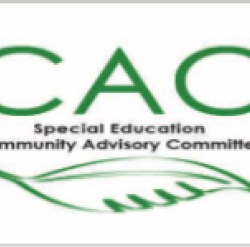YOUR CHILD HAS BEEN REFERRED FOR SPECIAL ED - NOW WHAT?
It was determined that your child may benefit from special education assessment and/or services.
With your consent, the school team has 60 days to complete the assessment. This assessment helps the IEP (Individual Education Plan) team to determine whether your child meets criteria for one or more of the following special education eligibility categories:
- Specific Learning Disability
- Autism
- Speech Language Impairment
- Other Health Impairment
- Emotional Disturbance
- Intellectual Disability
- Deaf
- Hard of Hearing
- Visually Impaired
- Deaf Blindness
- Orthopedic Impairment
- Traumatic Brain Injury
- Multiple Disabilities
In general, each category has criteria to help determine if your child has a disability and if this disability adversely impacts their education. If both portions of the eligibility criteria are met, the IEP team will use the assessment data and classroom performance data to help determine areas of need (deficit) in your student’s program that may require special education services. Areas of need means an area or skill in which a child is performing statistically well below his or her same aged peers. An area of need is not necessarily an area of weakness. All persons have strengths and weaknesses. An area of need is an area in which performance is well below same aged students.
The assessment process includes getting input from the parent, teachers and any appropriate outside providers. The assessment team may ask you to complete forms to assist with the completion of the assessment, if you have questions about anything you are being asked to complete, please contact the school psychologist.
The IEP Process
The IEP team will always include the following:
- Parent
- General Education Teacher
- Special Education Teacher
- Administrator
When necessary additional participants may be invited, such as:
- School Psychologist
- Occupational Therapist
- Physical Therapist
- Behavior Intervention Specialist
- Mental Health Specialist
- School Nurse
- Parents may also invite other necessary participants
At the initial IEP, the team will meet to review the assessment, determine eligibility and if necessary, discuss the need for special education services.
The IEP team will review your child’s strengths and areas of need (Present Levels of Performance) and develop annual goals in the areas of need. Once the IEP team agrees upon annual goals, they will determine appropriate accommodations/modifications and services and placement to meet the annual goals.
Accommodations help the student access the curriculum. An accommodation does not change what a student is expected to learn. It can change how the learning is accessed or how learning is demonstrated. An example of an accommodation is specialized writing tool for a student with fine motor deficits or flexible seating for students who have attending deficits. The content of the curriculum is not changed.
When a student is performing well below his or her peers in the classroom and the IEP team decides that they should not be expected to complete assignments as typically given, modifications to the curriculum or grades may be appropriate. Modification change what the student is expected to learn. It is very important for the IEP team to be mindful that when modifications are made to state standards and grading standards, a student may no longer be eligible for a high school diploma and may instead work toward a certificate of completion.
After discussing accommodation, the IEP team will discuss what services are need for the student to make progress on their goals. Examples of services are:
- specialized academic instruction in the general education classroom
- specialized academic instruction outside of the general education classroom
- speech/language services
- school based occupational therapy
- school based physical therapy
- adapted physical education.
- counseling
Lastly, the IEP team discuss the best placement or setting to provide the services and in which your child can meet their goals. There is a wide range of placement options from general education to a residential treatment setting. It is the intent of IUSD as well as our legal obligation to help your child make progress on their annual IEP goals in the presence of his or her non-disabled peers to the greatest extent possible. This is known as least restrictive environment (LRE).
consenting to the iep
At the completion of the IEP, you will have to option to review the IEP paperwork, including taking it home with you for review, if necessary. As a parent, you have the option of fully consenting to the IEP, not agreeing to any part of the IEP or partially agreeing to the IEP. If you indicate that you do not agree to the IEP, the school will not implement it, if the IEP is partially signed, the District will implement only the parts that are consented to by the parent. Once you have agreed to the IEP that the IEP team, including yourself, discussed and proposed, the school team will implement it as written.
You will receive progress reports on your child’s progress toward their goals at the same rate as general education parents receive progress reports. The progress reports will give you information about how the student is progressing toward their annual goal and if they are on track to meet the goal. If the teacher reports that the student is not making appropriate progress or that they have met the goal ahead of time, an addendum IEP may be called to make adjustments.
Annual IEP Meeting
Every year the IEP team will reconvene for the Annual IEP meeting. At that annual meeting, the team will review the progress on the previous goals, update the Present Levels of Performance, agree on new goals and discuss any needed adjustment to the accommodations, services and placement.
Triennial IEP meeting
Every three years a triennial IEP meeting is held to re-determine eligibility. If the team decides that it is necessary, a reassessment is completed to determine if your child continues to be eligible for special education services. The IEP team will send the parents an assessment plan and assessments will begin once the parent has signed the assessment plan and returned it to the school. The assessment may include questionnaires and rating scales that the parent will need to complete. If you have questions or need a translator to complete any of the requested information, contact the school psychologist. As with the initial assessment, this assessment also helps to determine your child’s continued areas of need.
At that triennial IEP meeting, the team will review the assessment, if one has been completed and make a determination as to whether or not the child continues to be eligible for special education and under what category. The team will then discuss progress on the previous goals, update the Present Levels of Performance, agree on new goals and discuss any needed adjustment to the accommodations, services and placement.
Addendum IEP Meeting
An addendum IEP meeting is held when a member of the team, including the parent, has a new concern to address that is related to the child’s disability or feels that part of the last annual IEP needs to be adjusted in order for the student to make progress on their agreed upon goals.
Any member, including the parent, of the IEP team can request an addendum IEP meeting. When parents request IEP meetings, they are generally scheduled within 30 days of the request.
Procedural Safeguards
English [pdf]
Farsi [pdf]
Korean [pdf]
Mandarin Chinese [pdf]
Spanish [pdf]
Vietnamese [pdf]
click here to view Response to parent inquiries regarding ab 1369
Recently, the California Department of Education (CDE) released the California Dyslexia Guidelines in response to assembly bill 1369. While “not legally binding… [this document] provides practical resources for identifying and educating students who are struggling academically because they cannot read.” Irvine Unified School District (IUSD) has long been committed to identifying the needs of all students and using appropriate instructional strategies and interventions. The district uses several universal screening measures to identify students who may require additional supports due to learning difficulties. IUSD conducts screening three times a year for students K-8. These include, but are not limited to, assessments targeting phonological awareness, alphabet knowledge, sound/symbol association, reading comprehension, oral reading fluency, and decoding. Additionally, Irvine teachers utilize informal assessment, observations, and work samples to identify students who may be at-risk. All IUSD primary teachers are trained in early reading strategies and targeted instruction. Evidence-based reading interventions are also available to all schools. These include multi-sensory, direct, explicit, structured, and sequential approaches that target phonemic awareness, fluency, comprehension, and phonics. IUSD will continue to model best practices in assessment, instruction, and intervention in accordance with advances in research and ongoing CDE guidance.

